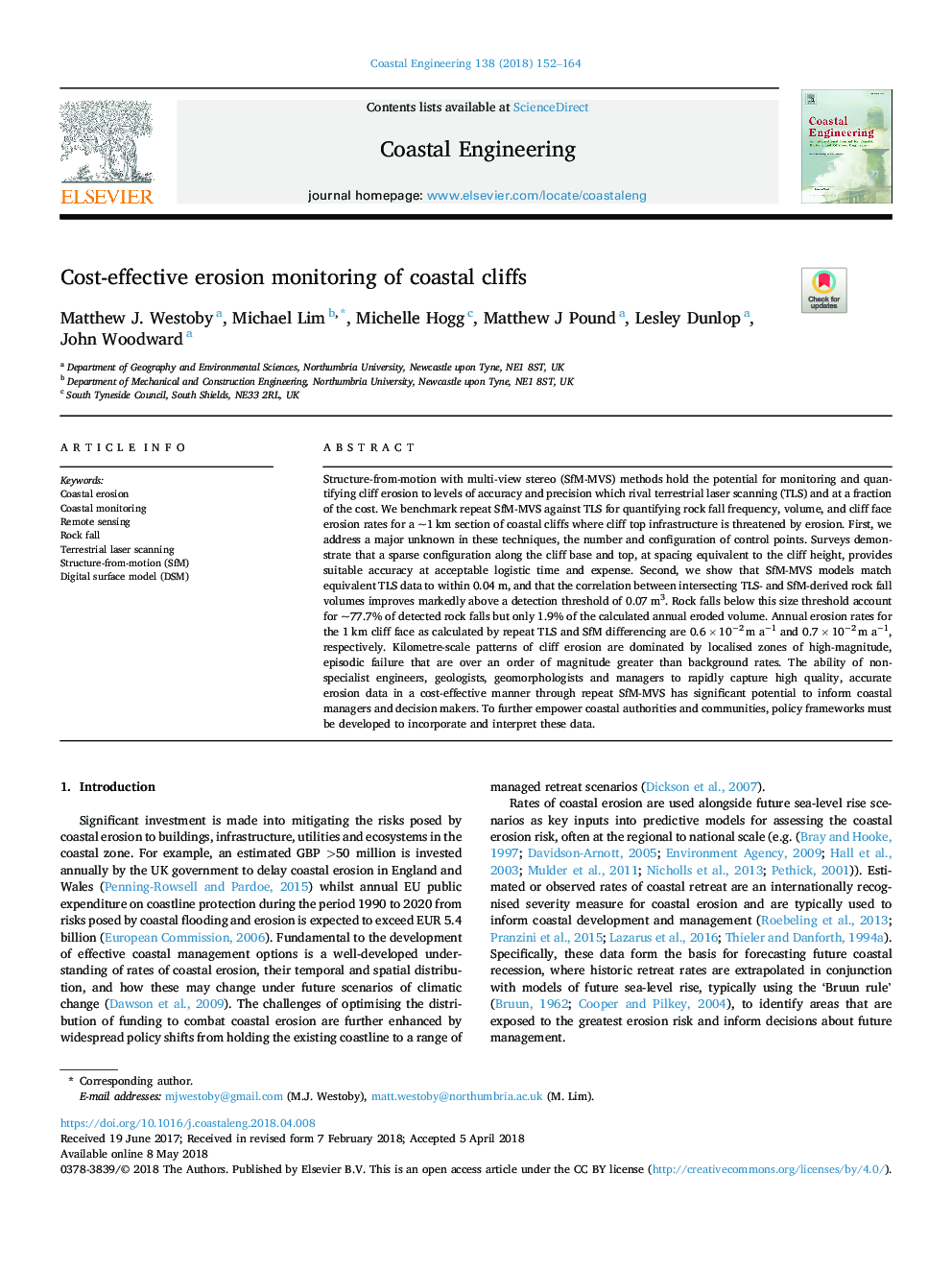| Article ID | Journal | Published Year | Pages | File Type |
|---|---|---|---|---|
| 8059486 | Coastal Engineering | 2018 | 13 Pages |
Abstract
Structure-from-motion with multi-view stereo (SfM-MVS) methods hold the potential for monitoring and quantifying cliff erosion to levels of accuracy and precision which rival terrestrial laser scanning (TLS) and at a fraction of the cost. We benchmark repeat SfM-MVS against TLS for quantifying rock fall frequency, volume, and cliff face erosion rates for a â¼1â¯km section of coastal cliffs where cliff top infrastructure is threatened by erosion. First, we address a major unknown in these techniques, the number and configuration of control points. Surveys demonstrate that a sparse configuration along the cliff base and top, at spacing equivalent to the cliff height, provides suitable accuracy at acceptable logistic time and expense. Second, we show that SfM-MVS models match equivalent TLS data to within 0.04â¯m, and that the correlation between intersecting TLS- and SfM-derived rock fall volumes improves markedly above a detection threshold of 0.07â¯m3. Rock falls below this size threshold account for â¼77.7% of detected rock falls but only 1.9% of the calculated annual eroded volume. Annual erosion rates for the 1â¯km cliff face as calculated by repeat TLS and SfM differencing are 0.6â¯Ãâ¯10â2â¯m aâ1 and 0.7â¯Ãâ¯10â2â¯m aâ1, respectively. Kilometre-scale patterns of cliff erosion are dominated by localised zones of high-magnitude, episodic failure that are over an order of magnitude greater than background rates. The ability of non-specialist engineers, geologists, geomorphologists and managers to rapidly capture high quality, accurate erosion data in a cost-effective manner through repeat SfM-MVS has significant potential to inform coastal managers and decision makers. To further empower coastal authorities and communities, policy frameworks must be developed to incorporate and interpret these data.
Keywords
Related Topics
Physical Sciences and Engineering
Engineering
Ocean Engineering
Authors
Matthew J. Westoby, Michael Lim, Michelle Hogg, Matthew J Pound, Lesley Dunlop, John Woodward,
